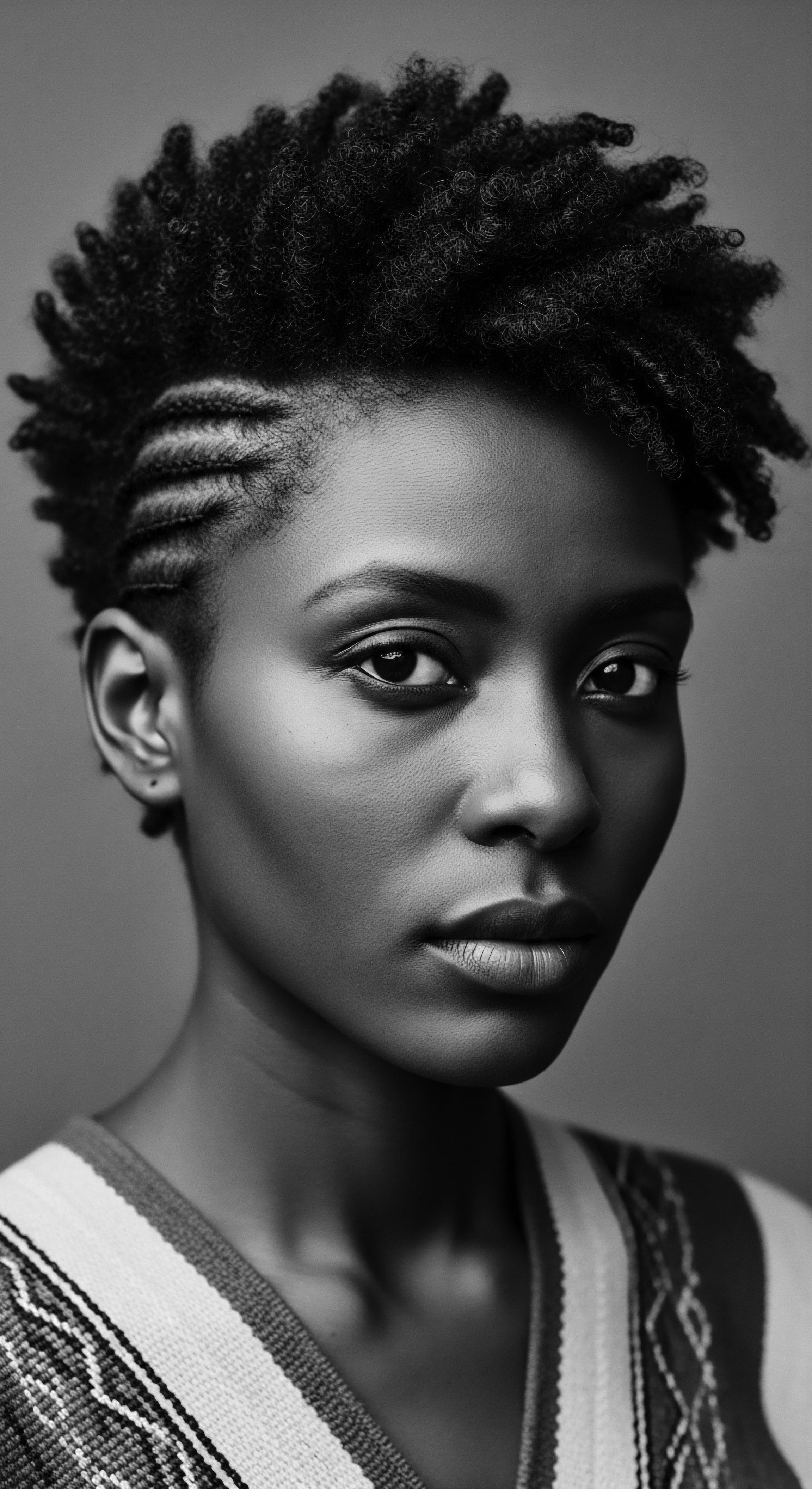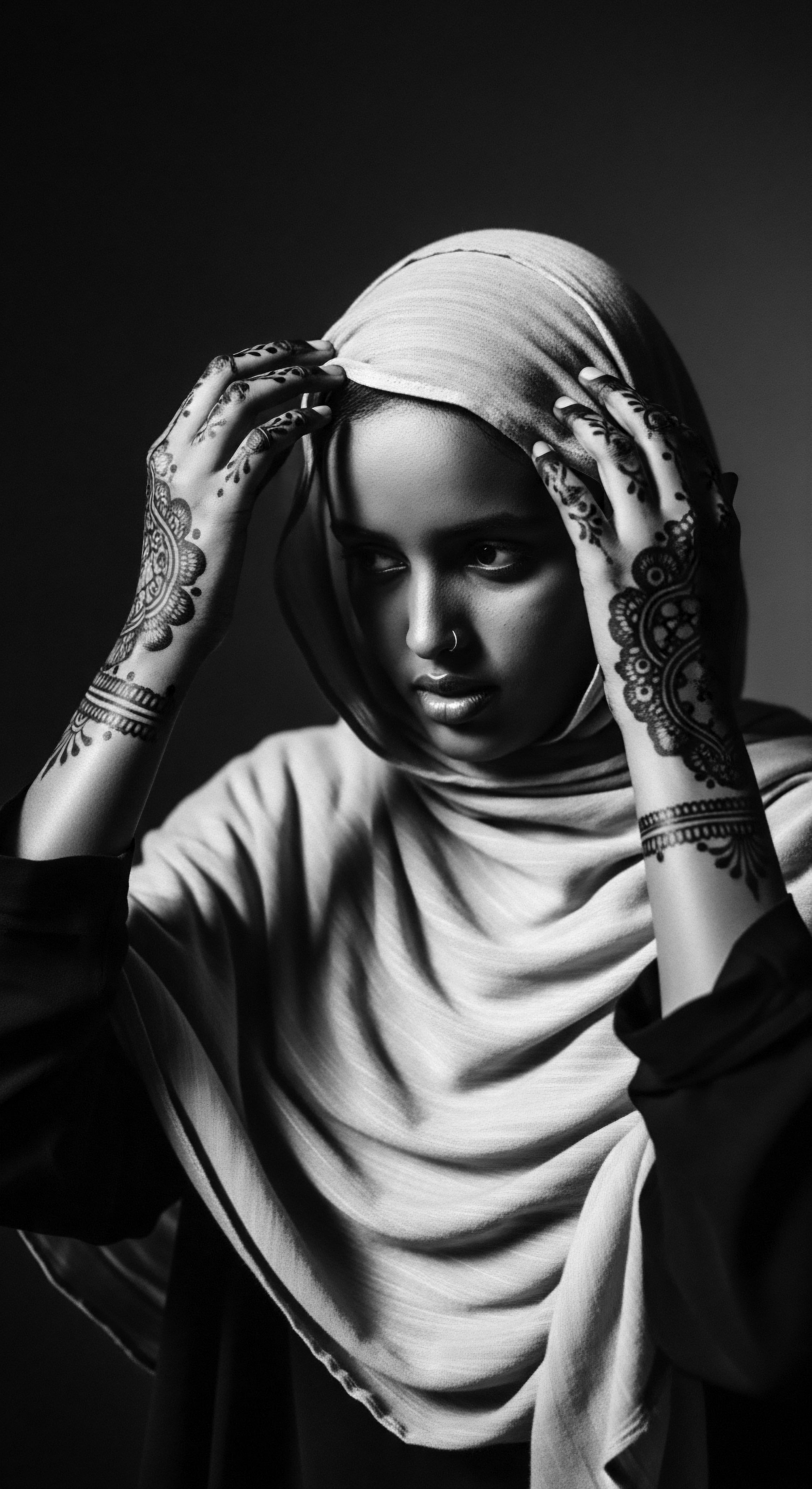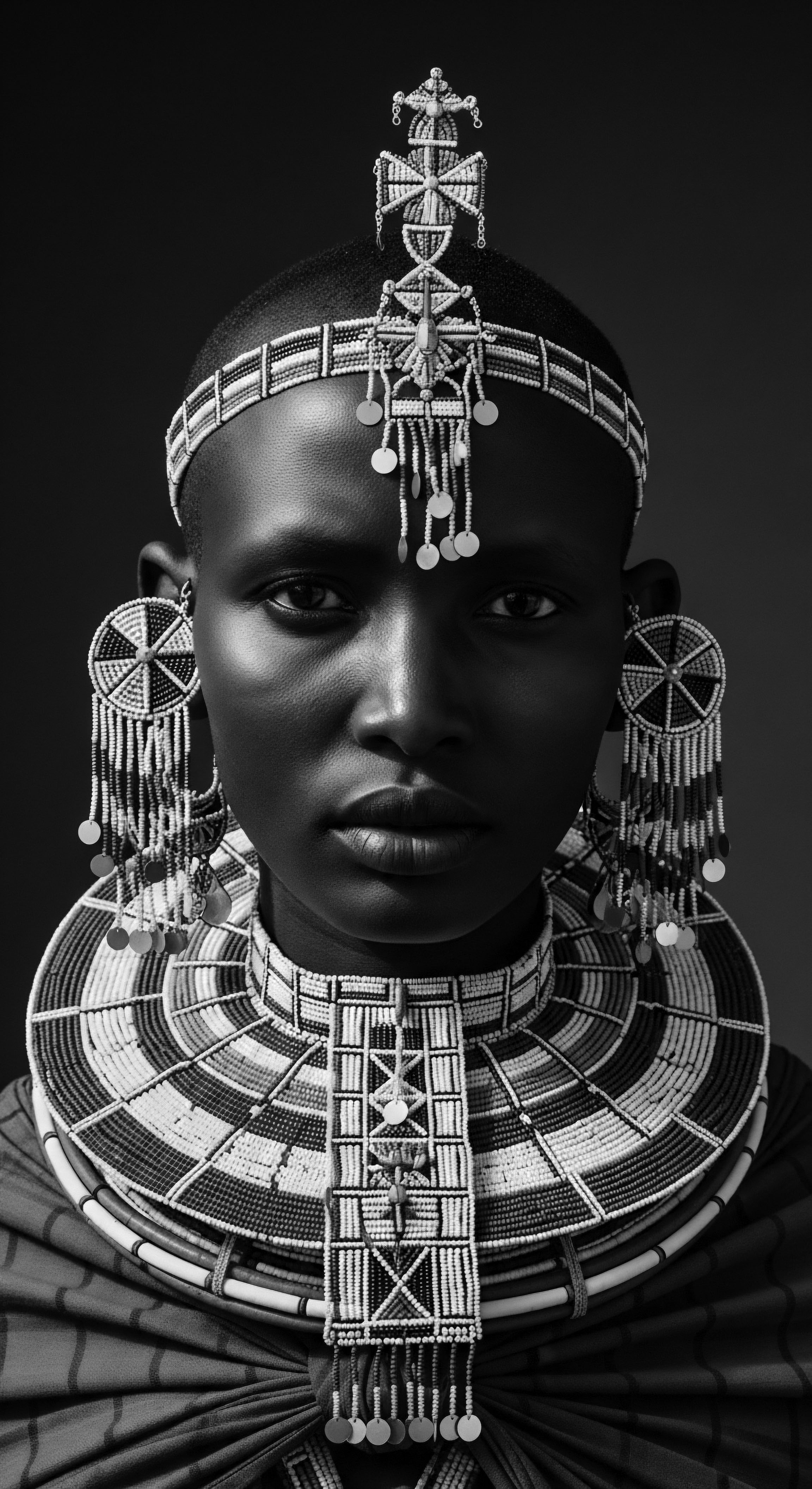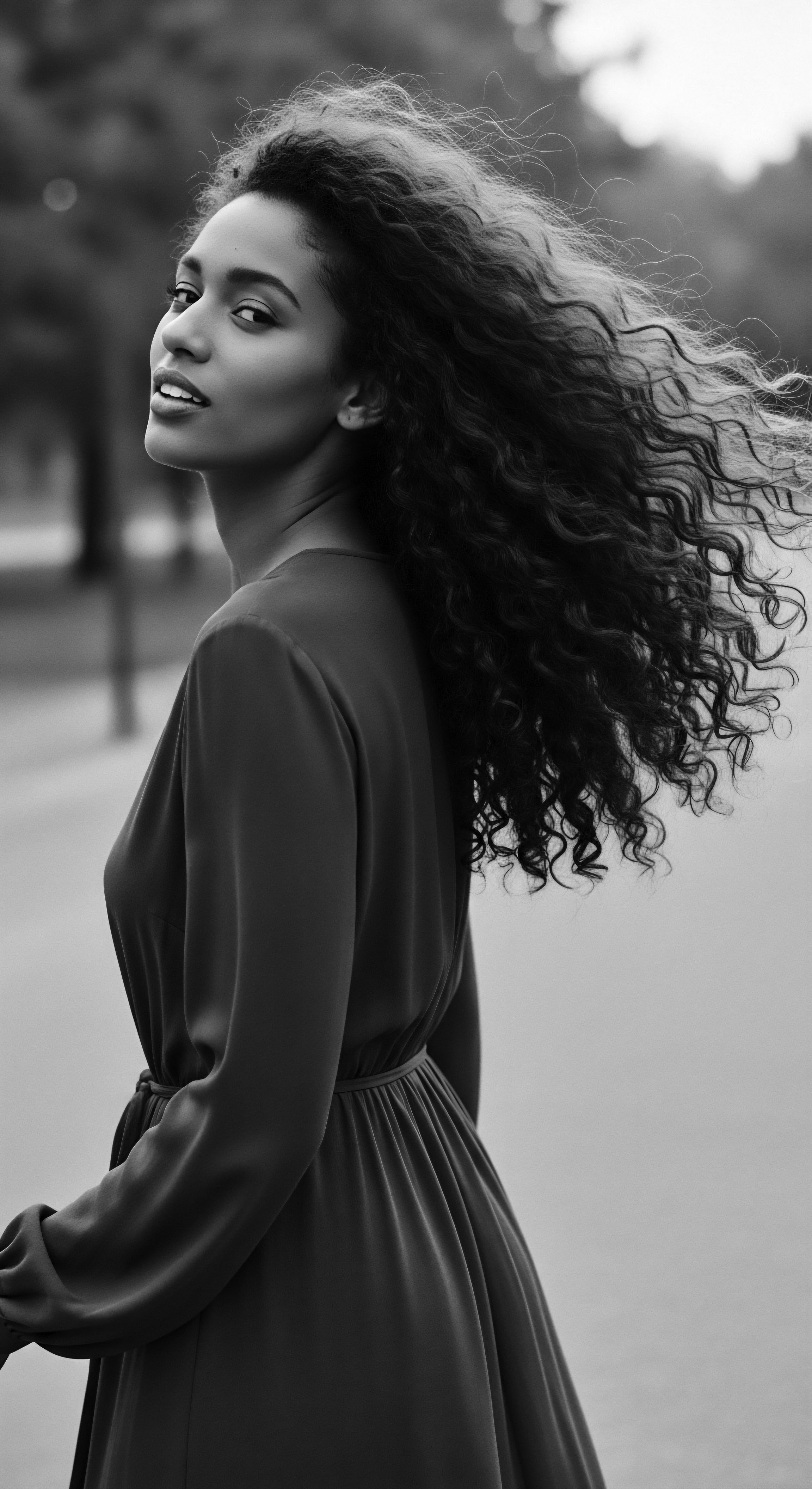
Fundamentals
The understanding of Malawian Cosmology commences with the recognition of a world steeped in interconnectedness, a profound acknowledgment that existence flows through visible and unseen realms. This intricate system of thought, passed through generations, provides a comprehensive lens through which the peoples of Malawi—diverse ethnic groups such as the Chewa, Yao, Lomwe, and Tumbuka—perceive their place in the universe. Its fundamental elucidation is not a rigid dogma but a living, evolving interpretive framework for existence itself, deeply rooted in ancestral wisdom and the rhythms of the land.
At its core, the Malawian cosmological statement posits a creator, often known as Mlengi or Chauta, who brought forth all life and sustains it. This divine entity is generally seen as distant yet benevolent, operating through intermediaries ❉ the ancestral spirits, known as Mizimu. These spirits are not merely ghosts of the past; they are active participants in the present, influencing daily life, health, and communal harmony. The significance extends beyond human interaction, permeating the very soil, the waters, and the air, suggesting an unbroken spiritual thread binding all things.
Malawian Cosmology provides a holistic interpretive framework, viewing hair as a spiritual conduit connecting individuals to the ancestral realm and the natural world.
For communities across Malawi, the natural world is imbued with spiritual meaning, with every tree, rock, or stream holding a potential presence of the sacred. This reverence for the environment forms a cornerstone of their existence. It means that daily practices, including those concerning personal adornment and care, are not isolated acts.
They are often imbued with symbolic weight, reflecting a deep respect for the elements and the unseen forces that shape human experience. This interwoven existence, where the physical and the spiritual constantly interact, lays the groundwork for how textured hair, specifically, holds its unique place within this grand cosmic design.

The Sacred Thread of Hair ❉ An Initial Look
Within this cosmological lens, the physical body is more than mere flesh; it is a vessel, a conduit. Hair, in particular, carries a profound spiritual charge. Its placement at the crown of the head, closest to the heavens and the realm of spirits, bestows upon it a special designation. It is understood not only as a natural adornment but also as a sensitive antenna, capable of receiving and transmitting spiritual energies.
The condition and styling of one’s hair, therefore, often carried implications beyond personal aesthetics. It became a public declaration of one’s spiritual well-being, community standing, and adherence to ancestral dictates.
- Mlengi (Chauta) ❉ The supreme creator, a distant yet foundational presence in the cosmic order.
- Mizimu ❉ Ancestral spirits, active intermediaries between humanity and the divine, often influencing daily existence.
- Interconnectedness ❉ The profound belief that all aspects of existence—human, spiritual, and natural—are inextricably linked.
- Hair as Conduit ❉ The initial understanding of hair as a channel for spiritual communication and energy.

Intermediate
An intermediate examination of Malawian Cosmology deepens the initial understanding, revealing how its principles are not abstract concepts but tangible guides for communal life and individual identity, particularly as expressed through textured hair. The cosmology extends beyond creation myths, offering a robust explanation of human relationships, societal roles, and the enduring connection to the lineage. It serves as a living legacy, a system of belief that shapes behavior, defines aesthetics, and informs rituals, many of which directly pertain to the care and adornment of hair across various life stages.
The Chewa people, for instance, a prominent ethnic group in Malawi, articulate their worldview through the concept of Chauta (God) and the veneration of the Mizimu (ancestors) through ceremonies often involving communal gathering and offerings. The continuity of life is a paramount idea, where the living are merely a segment of a larger continuum that includes the ancestors and those yet to be born. This continuous thread of existence means that every individual is a custodian of their ancestral heritage, and their appearance, especially their hair, can communicate this profound connection.

Hair as a Living Ancestral Record
For Black and mixed-race communities rooted in Malawian heritage, hair is not a superficial aspect of appearance. It is a dynamic register of personal and collective history. Each strand carries the echoes of countless generations, a tangible link to the wisdom, resilience, and beauty of those who came before.
The careful tending of one’s coils and curls becomes an act of honoring this lineage, a daily ritual that acknowledges the past while grounding one in the present. This profound relationship means that traditional hair care practices, often involving specific herbs, oils, and styling techniques, are understood as inherited wisdom, rather than mere cosmetic routines.
Consider the historical practice of communal hair braiding among women, particularly within Chewa and Yao traditions. These sessions were more than opportunities for styling; they were intimate spaces for the transmission of oral histories, cultural norms, and ancestral narratives. The elder women, with their skilled hands, would impart stories and lessons as they meticulously patterned the hair of younger generations.
This practice underscores the profound connection between hair, community, and the collective memory embedded within Malawian Cosmology. The intricate patterns were not arbitrary; they often mirrored natural formations, symbols of status, or even represented cosmological diagrams, making the head a living canvas for spiritual expression.
Ancestral hair practices in Malawian heritage are not just cosmetic routines; they are intimate communal rituals that transmit cultural narratives and spiritual knowledge.
The choice of traditional ingredients further highlights this cosmological link. Many plants used in hair treatments are believed to possess specific spiritual properties, connecting the user to the earth’s restorative powers. For example, certain barks or leaves, steeped and applied, were thought to cleanse not only the hair but also the spirit, inviting ancestral blessings. This holistic approach to hair wellness, blending physical care with spiritual alignment, stands as a testament to the enduring influence of Malawian cosmological principles on daily life.
Traditional Malawian societies often categorized hair by its texture, length, and style as indicators of age, marital status, or even the spiritual condition of an individual. A well-maintained, healthy head of hair signaled vitality and proper alignment with the ancestral spirits, while unkempt or neglected hair might suggest spiritual disharmony or mourning. The deliberate crafting of hairstyles, therefore, became a visible statement of one’s social standing and spiritual attunement within the community, providing a rich tapestry of non-verbal communication rooted in cosmological understanding.
| Practice / Element Communal Braiding |
| Traditional Understanding Social bonding, skill transmission, storytelling. |
| Cosmological Link Reinforces community, shared ancestral narratives, continuity of lineage. |
| Practice / Element Use of Specific Herbs/Oils |
| Traditional Understanding Cleansing, strengthening, adornment. |
| Cosmological Link Connection to earth's spiritual power, ancestral blessings through nature. |
| Practice / Element Hair as Antenna |
| Traditional Understanding Sensitive receiver of spiritual energies. |
| Cosmological Link Direct channel to Mizimu (ancestral spirits) and the divine. |
| Practice / Element Styling for Life Stages |
| Traditional Understanding Marks milestones (initiation, marriage, mourning). |
| Cosmological Link Reflects cosmic order and individual's place within the societal and spiritual continuum. |
| Practice / Element These practices underscore hair as a living, sacred extension of one's identity and connection to the spiritual universe. |

Academic
The academic definition of Malawian Cosmology requires a comprehensive and critical examination of its structural principles, symbolic lexicon, and lived implications, particularly as they pertain to the ancestral and contemporary experiences of textured hair. It is not sufficient to view this cosmological framework as a mere collection of myths or superstitions; rather, it represents a sophisticated and enduring system of thought that provides coherence to existence for its adherents. Its core tenets center on the omnipresent influence of the creator, often understood as a distant yet fundamental force, and the immediate, interactive presence of the Mizimu, the ancestral spirits. These spirits serve as vital intermediaries, mediating between the living and the spiritual planes, their influence extending to every aspect of human life, including the physical body, which is understood as a microcosm of the larger cosmos.
Scholarly work, such as that by Chakanza (2000), meticulously outlines the Malawian worldview where human beings are an integral part of a complex hierarchy that spans from the divine to the minutiae of the natural world. This hierarchical yet interconnected view means that the human body is not merely a biological entity; it is a repository of spiritual energy, a conduit for ancestral blessings, and a canvas upon which identity is articulated. Among all bodily features, hair occupies a distinctive position. Its continuous growth, its ability to be styled and adorned in myriad ways, and its connection to the head—the seat of consciousness and spiritual connection—imbue it with profound semiotic weight.

The Deep Grammar of Hair ❉ A Cosmological Lens
For many Malawian ethnic groups, the physical manifestation of textured hair, with its inherent coil and curl patterns, is perceived as a natural mirroring of cosmic order, perhaps echoing the spirals of shells or the winding paths of rivers. This innate structure is respected and understood as a gift, not something to be subdued or altered beyond recognition. Traditional hair care practices, therefore, emerge not from a desire to conform to external ideals but from a profound internal logic dictated by cosmological reverence and ancestral instruction. These practices are meticulously preserved and passed down, providing a continuous thread of cultural resilience.
A rigorous example illuminating this connection can be drawn from ethnographic studies examining the resilience of traditional hair practices among certain Malawian ethnic groups in the face of colonial cultural imposition. For instance, archaeological and historical evidence, alongside oral traditions, documents that certain elaborate hairstyles worn by Yao women in the late 19th and early 20th centuries were not just markers of status or beauty; they were complex symbolic statements directly related to their cosmological beliefs concerning spiritual protection and the maintenance of communal harmony (Werner, 1906). The sheer dedication to these intricate, time-consuming styles, which often required specific herbal mixtures for maintenance, speaks to a deep-seated spiritual compulsion rather than mere aesthetic preference.
Werner observed that these styles, particularly those fashioned into specific geometric patterns, were believed to literally “trap” or “ward off” malevolent spiritual influences from entering the body through the crown of the head, thereby acting as a physical manifestation of cosmological protection. This deep understanding meant that even under colonial pressure for Westernization, these practices persisted with remarkable tenacity in many rural areas, indicating their fundamental role as an existential anchor for the community.
Intricate hair patterns in Malawian traditions often mirrored cosmological diagrams, serving as symbolic safeguards against malevolent spiritual influences.
The cosmological understanding of hair in Malawi provides a powerful lens through which to comprehend the textured hair experiences of Black and mixed-race communities globally. It highlights that the historical struggle for hair acceptance and affirmation is not merely about physical appearance. It is a battle for the recognition of a deeper, ancestral heritage that perceives hair as a sacred extension of being, imbued with spiritual potency and historical memory. The denial or denigration of naturally coily and curly textures can, therefore, be seen as a denial of this inherent cosmological connection, severing a tangible link to ancestral knowledge and spiritual continuity.

Interconnectedness and Identity Through Hair
The Malawian cosmological delineation of the human person as intrinsically linked to the spiritual and natural worlds provides a compelling framework for understanding the profound psychological and cultural impact of hair. The hair, as the outermost visible manifestation of the self, becomes a significant marker of communal and individual identity. Anthropological research suggests that variations in hair adornment and care practices often corresponded with specific social roles, life transitions, and spiritual states, each carrying a particular cosmological import. The process of hair styling, for example, especially in communal settings, served as a ritualistic act that reinforced social bonds and transmitted cultural knowledge from one generation to the next.
The meaning of hair within Malawian Cosmology extends to concepts of purity and pollution. Certain hair preparations or styles might be associated with rituals for spiritual cleansing, while unkempt hair during mourning periods or illness could signify a temporary state of spiritual vulnerability or detachment from social norms. This level of specificity underscores the cosmological influence on even seemingly mundane aspects of daily life, elevating hair care from a personal grooming activity to a culturally significant ritual. The enduring sense of self, connected across time and space to ancestral lines, finds a powerful and visible expression in the ways Malawian peoples have traditionally cared for and adorned their hair.
- Hair as Spiritual Receptor ❉ The head’s proximity to the divine realm makes hair a primary site for receiving spiritual insights and ancestral communication.
- Styling as Symbolic Language ❉ Specific braiding patterns or adornments articulate social status, lineage, and spiritual condition within the community.
- Traditional Botanicals ❉ The use of indigenous plants for hair care, drawing on beliefs about their inherent spiritual and healing properties.
- Communal Grooming ❉ Shared hair rituals reinforce social cohesion and facilitate the intergenerational transfer of cosmological knowledge and cultural practices.

Reflection on the Heritage of Malawian Cosmology
Reflecting upon the Malawian cosmological delineation reveals a deep and enduring reverence for textured hair as a living archive, a sacred extension of being that holds the whispers of ancestral wisdom. This heritage-centric view challenges reductive understandings of hair as mere fiber or fashion. It invites us to consider how the deep rhythms of the earth, the unseen currents of the spirit world, and the unbroken chain of lineage converge upon the human head. Hair, in this rich context, becomes a palpable connection to the source, a tender thread that binds the individual to the collective and to the very fabric of the universe.
The ancestral practices associated with Malawian Cosmology, meticulously tending to coils and curls with indigenous botanicals and intentional hands, stand as powerful reminders of self-care practices steeped in profound cultural significance. These rituals were never about superficiality; they were acts of spiritual alignment, communal bonding, and a quiet affirmation of identity against external pressures. The enduring beauty of textured hair, in all its myriad forms, thus represents not just aesthetic appeal but a testament to the resilience of cultural memory, a vibrant legacy that continues to shape and inspire.
This exploration encourages a deeper appreciation for the nuanced communication embedded within hair care. It speaks to the ongoing journey of Black and mixed-race communities to reclaim and celebrate the inherited splendor of their hair. The Malawian cosmological framework offers a powerful counter-narrative to Eurocentric beauty standards, asserting that the inherent texture of one’s hair is not only perfect but also divinely purposed.
It is a call to recognize that in every gentle stroke, every patient detangling, and every thoughtful style, we are not simply tending to strands. We are honoring a continuum of ancestral reverence, ensuring that the legacy of textured hair, as illuminated by Malawian cosmological thought, remains an unbound helix, reaching towards past wisdom and future possibility.

References
- Chakanza, J. C. (2000). Community and Belonging ❉ A Study of the Chewa and Nyanja People of Malawi. University of Malawi Press.
- Schoffeleers, M. (1985). Religion and the Dramatization of Life ❉ Spirit Beliefs and Rituals in Southern Africa. Oxford University Press.
- Werner, A. (1906). The Natives of British Central Africa. Archibald Constable & Co. Ltd.
- Zeleza, P. T. (2008). The African Diaspora ❉ A History Through Culture. University Press of Florida.
- Phiri, K. M. (2008). Malawian Oral Literature ❉ The Aesthetics of Indigenous Art and Culture. Africa World Press.
- Mbiti, J. S. (1969). African Religions and Philosophy. Heinemann.
- Mkandawire, T. (2002). African Intellectuals and the State in Southern Africa. CODESRIA.
- Gann, L. H. & Duignan, P. (1970). Africa and the World ❉ An Introduction to the History of Sub-Saharan Africa. Praeger Publishers.
